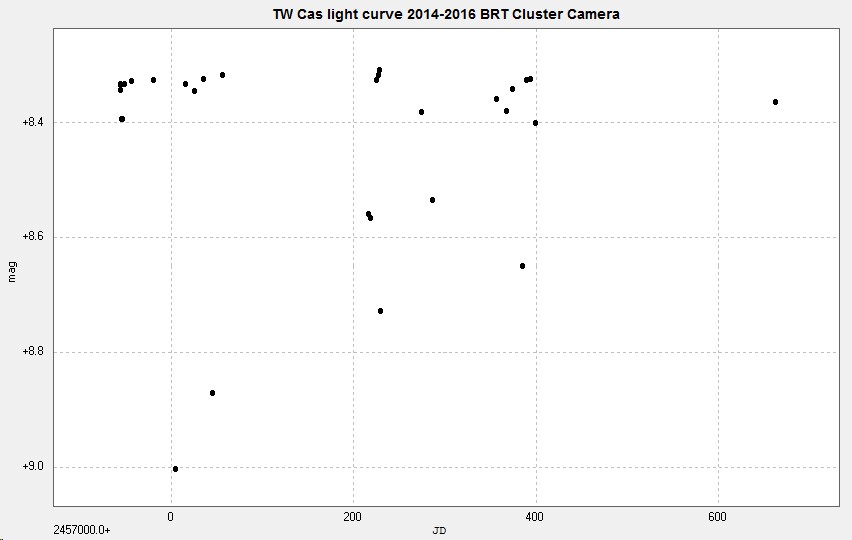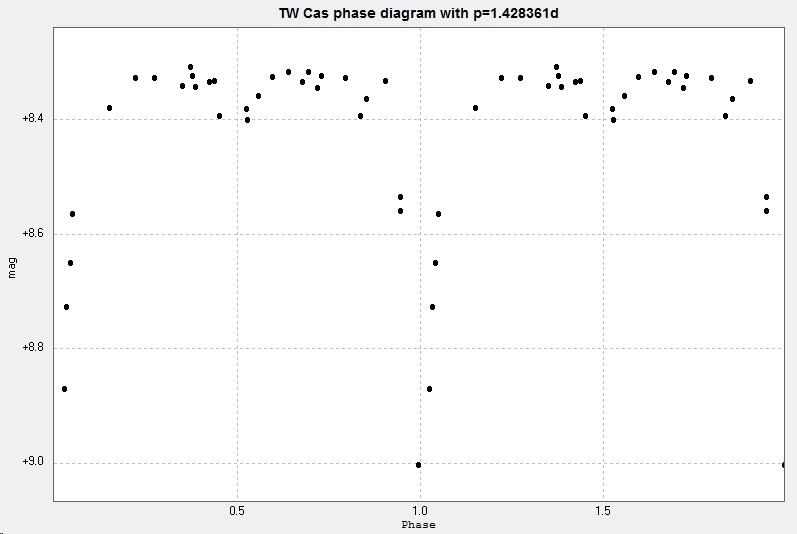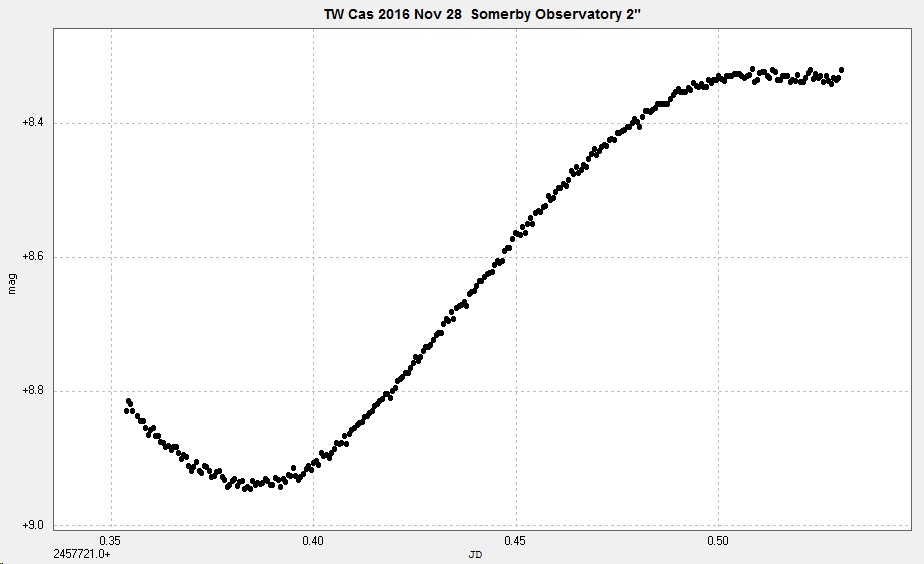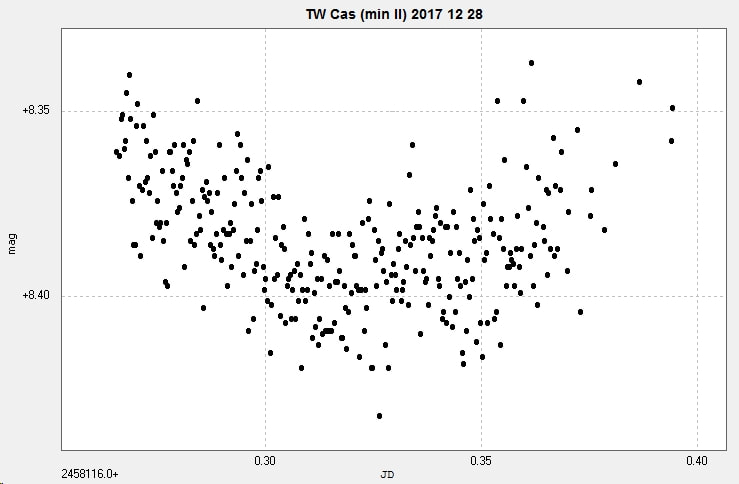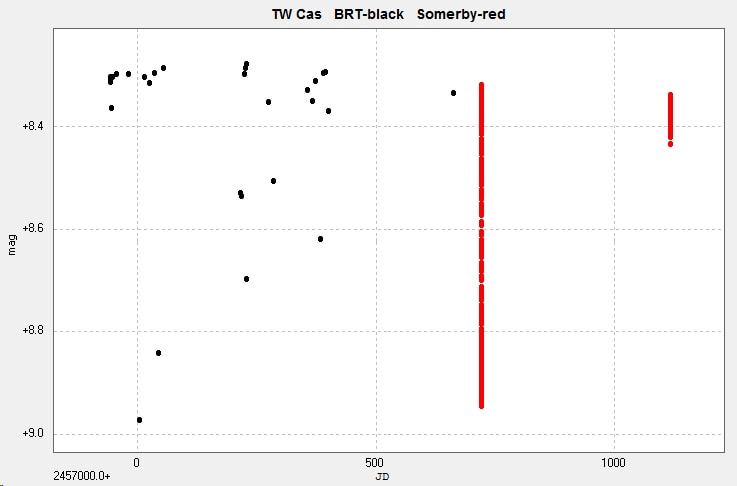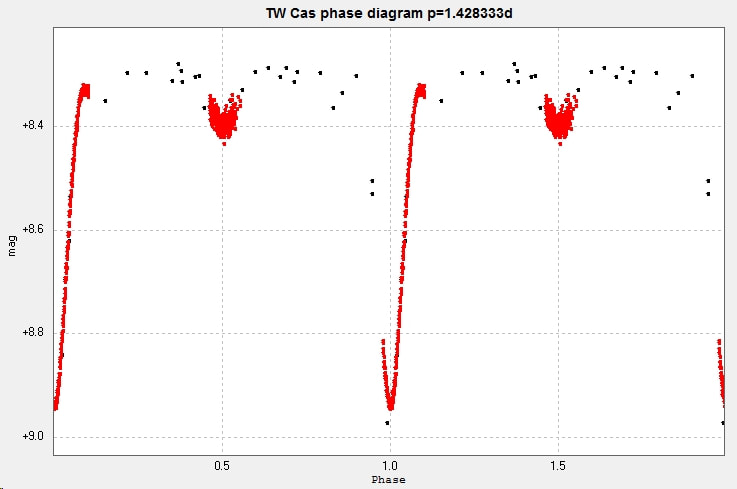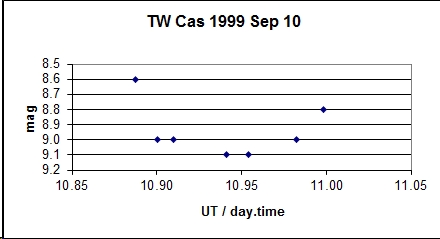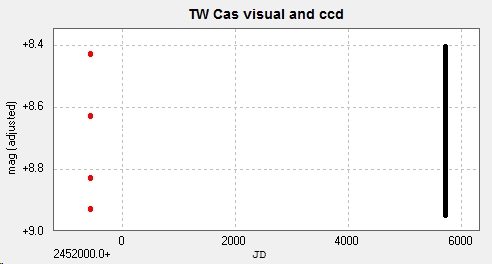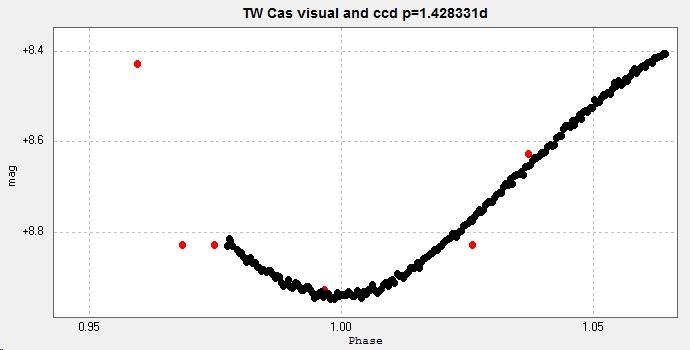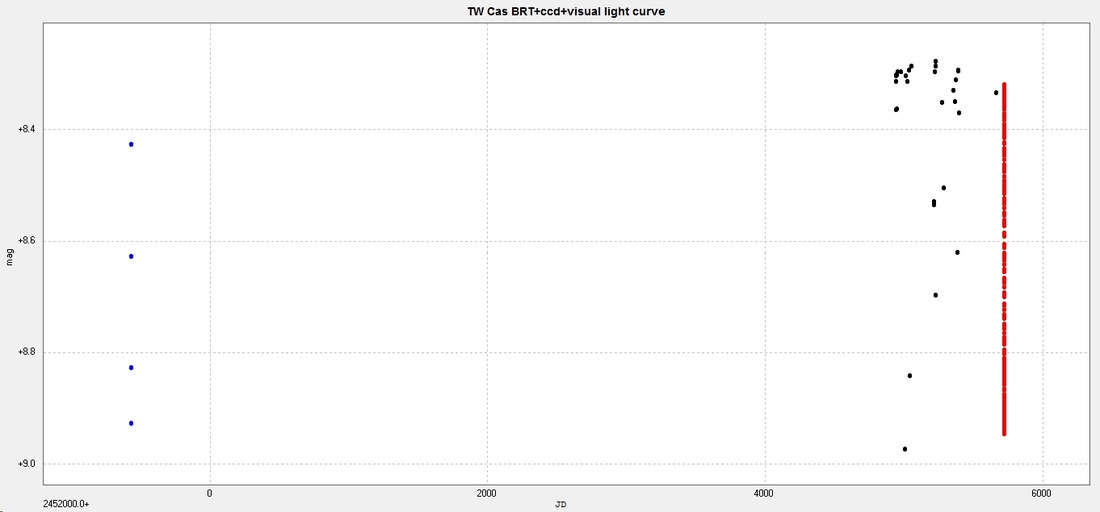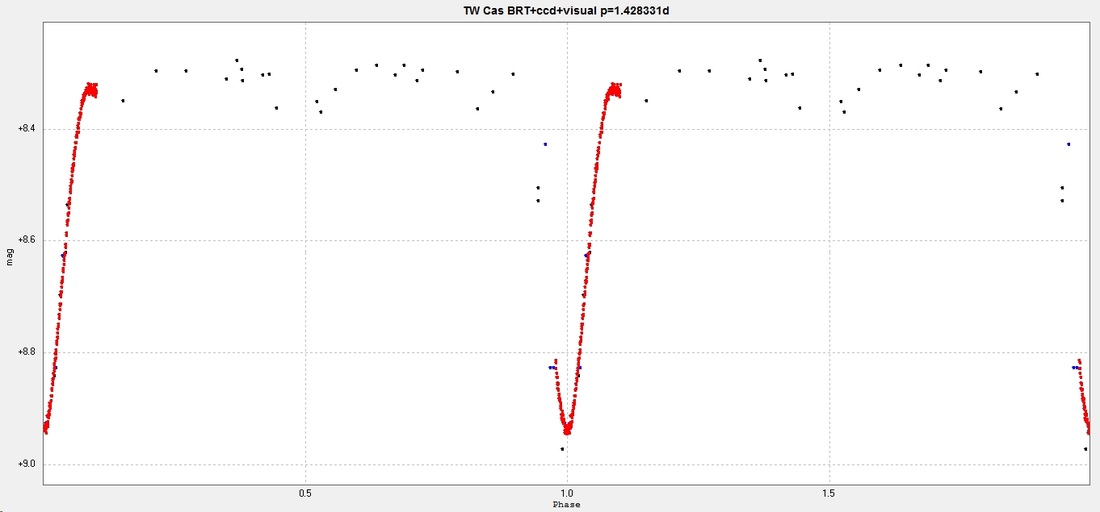TW Cassiopeiae / TW Cas
Light curve and phase diagram of the EA type eclipsing binary TW Cassiopeiae / TW Cas. This was constructed from photometry of 30 images taken by the Bradford Robotic Telescope Cluster Camera (BRT) between 12 October 2014 and 1 October 2016.
The following phase diagram was constructed from these observations.
The period of 1.428361 d was the best fit to this data, which compares well with 1.428324 d from the AAVSO VSX and 1.428334 d from Kreiner.
On November 28 2016 I obtained the following light curve using the 2" refractor at Somerby Observatory. (The fade was missed due to cloud.)
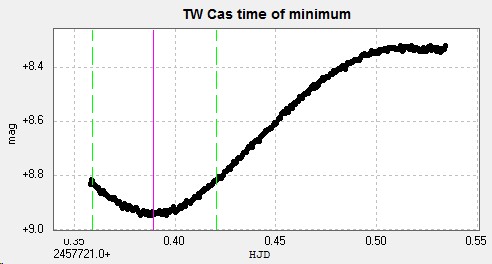
The time of minimum obtained from this eclipse was
HJD 2457721.3891.
A secondary minimum was observed from Somerby on 28 December 2017.
Combining the BRT and Somerby data, after adjusting the zero point of the BRT data 'by eye' to better fit the ccd data (by -0.03 mag), produced the following light curve and phase diagram. I intend to observe a complete primary eclipse in the near future!
1999 visual observation, using 15x80 binoculars.
Combining visual (red) and ccd (black) observations. Here, the visual magnitudes were adjusted 'by eye' (by -0.174 mag) to better fit the ccd results.
Comining BRT (black) ccd (red) and visual (blue) observations;
[Page updated 3 January 2018]

